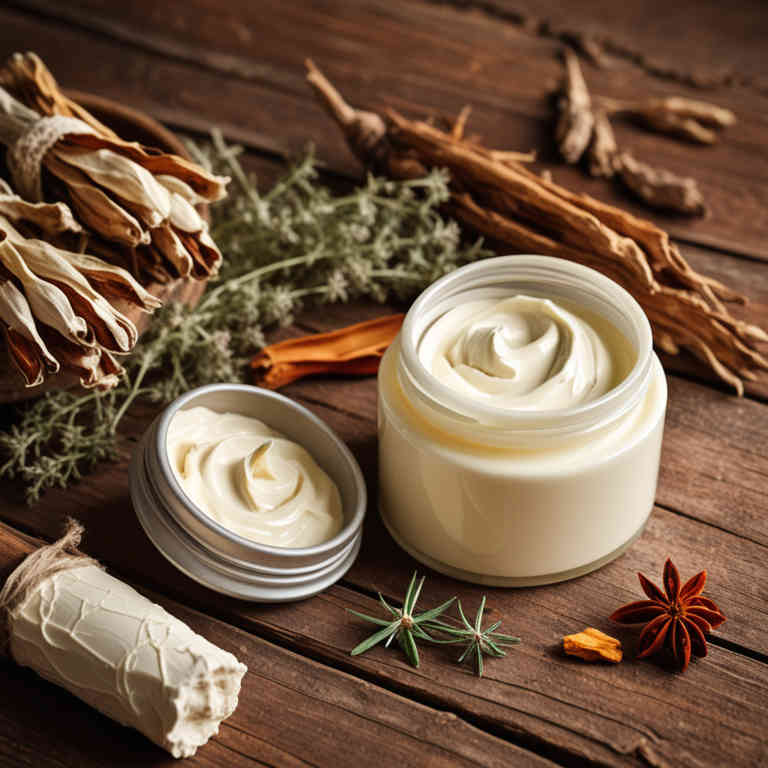Zingiber officinale cream for medicinal use

Zingiber officinale cream is a topical preparation made from the powdered root of the ginger plant, Zingiber officinale, combined with a base such as cream or oil.
It is commonly used in herbalism to alleviate pain, reduce inflammation, and relieve muscle aches due to its warming and anti-inflammatory properties. The active compounds in ginger, such as gingerol and shogaol, contribute to its therapeutic effects. This cream is often applied to sore muscles, joints, or areas of inflammation to provide localized relief.
It is a popular remedy in traditional medicine for conditions like arthritis, headaches, and digestive discomfort.
Uses
Zingiber officinale cream has been used to treat various ailments for centuries, with its origins tracing back to ancient Ayurvedic and Chinese medicinal practices.
Traditionally, it was applied topically to reduce inflammation, alleviate pain, and promote circulation, particularly for conditions like arthritis and muscle aches. In modern times, the cream is widely used for its anti-inflammatory and analgesic properties, often found in over-the-counter topical treatments for skin irritations and minor injuries. Its active compounds, such as gingerols and shogaols, contribute to its effectiveness in soothing discomfort and improving skin health.
Today, it remains a popular natural remedy, bridging traditional wisdom with contemporary wellness practices.
Benefits
Zingiber officinale cream has health benefits such as reducing inflammation, alleviating pain, and promoting skin healing.
This herbal preparation, derived from the root of the ginger plant, is known for its warming and stimulating properties. It can help relieve symptoms of arthritis, muscle aches, and digestive issues when applied topically or ingested. The active compounds in ginger, such as gingerols and shogaols, contribute to its anti-inflammatory and antioxidant effects.
Regular use of Zingiber officinale cream may support overall wellness and enhance the body's natural healing processes.
Constituents
Zingiber officinale cream active constituents include gingerol, shogaol, and zingiberene, which are bioactive compounds derived from the rhizome of the ginger plant.
These compounds possess anti-inflammatory, antioxidant, and analgesic properties that contribute to the cream’s therapeutic effects. Gingerol, in particular, is known to inhibit the production of inflammatory cytokines and prostaglandins, making it effective in reducing pain and swelling. Shogaol, a more potent derivative, also exhibits similar anti-inflammatory actions and may enhance the efficacy of the cream.
Zingiberene contributes to the cream's aromatic properties and may support digestive health when applied topically or used in conjunction with internal herbal preparations.
Preparation
To make Zingiber officinale cream, begin by finely grating fresh ginger root and simmering it in a small amount of water until it becomes a thick paste.
Strain the mixture to remove any solids, then allow it to cool slightly. In a blender, combine the cooled ginger paste with a base of coconut oil or shea butter, adding a bit of honey or beeswax to achieve the desired consistency. Blend until smooth and creamy, then transfer the mixture to a clean container and store it in a cool, dark place.
This preparation can be used topically to soothe muscle aches or applied as a warming compress for cold-related discomfort.
Side Effects
Zingiber officinale cream may lead to gastrointestinal discomfort, skin irritation, or allergic reactions in some individuals.
It contains zingiber officinale, commonly known as ginger, which is used for its anti-inflammatory and analgesic properties. While generally safe for topical use, excessive application or prolonged use may cause skin redness, itching, or burning sensations. In rare cases, it may interact with certain medications, particularly blood thinners, increasing the risk of bleeding.
Individuals with sensitive skin or known allergies to ginger should exercise caution when using this preparation.